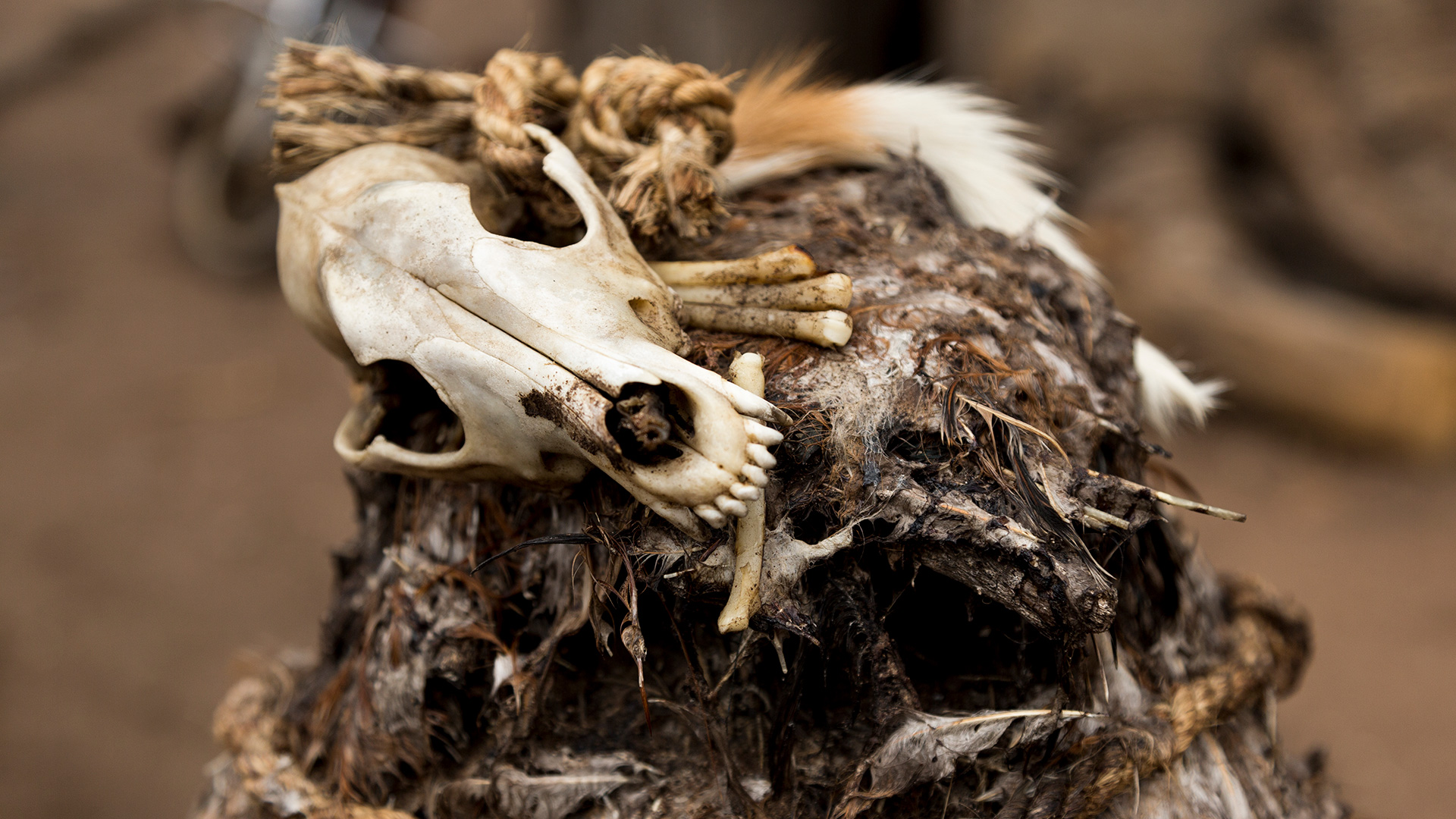
Rotting carcasses sit piled atop cement pillars, and feathers and bones stick to vertically standing logs. Dried blood covers everything.
This is the entrance to Tongnaab Yaane, the shrine and dwelling place of the West African deity Tongnaab, whose name means “chief of the earth.” The shrine is considered the most powerful of the hundreds of shrines tucked away in the rock shelters, caves, and crevasses of Ghana’s Tongo Hills. Visiting means confronting the practice of animal sacrifice.
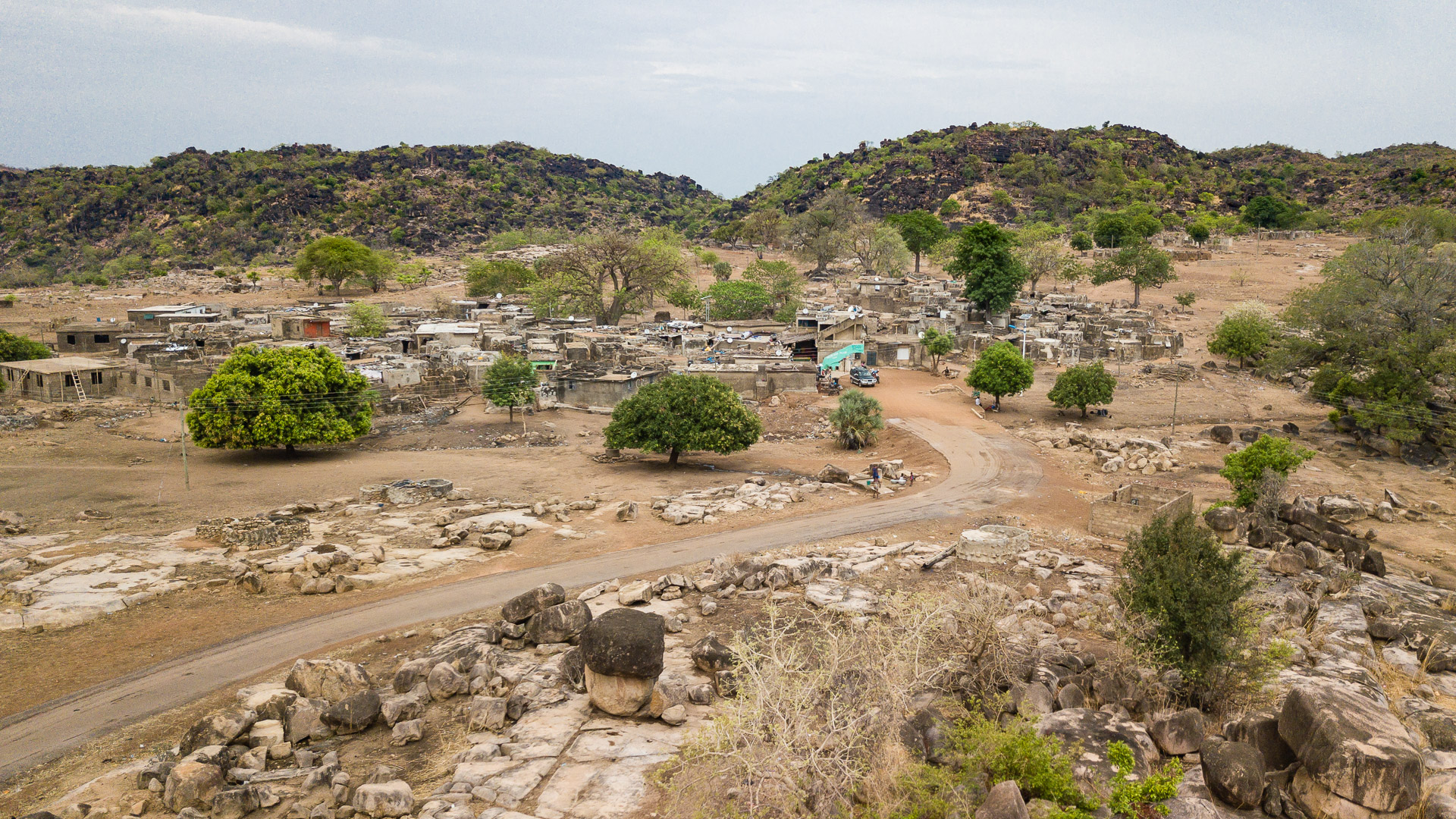
The small community of Tengzug is tucked away in the boulder-strewn Tongo Hills. The area is believed to be a powerful spiritual site. Photo by William Haun.
Approaching the place where the shrine is located, a ring of hills can be seen rising up out of the savannah, blackened by the giant boulders that cover them. In the center rests the remote northern village of Tengzug, populated by the Talensi people.
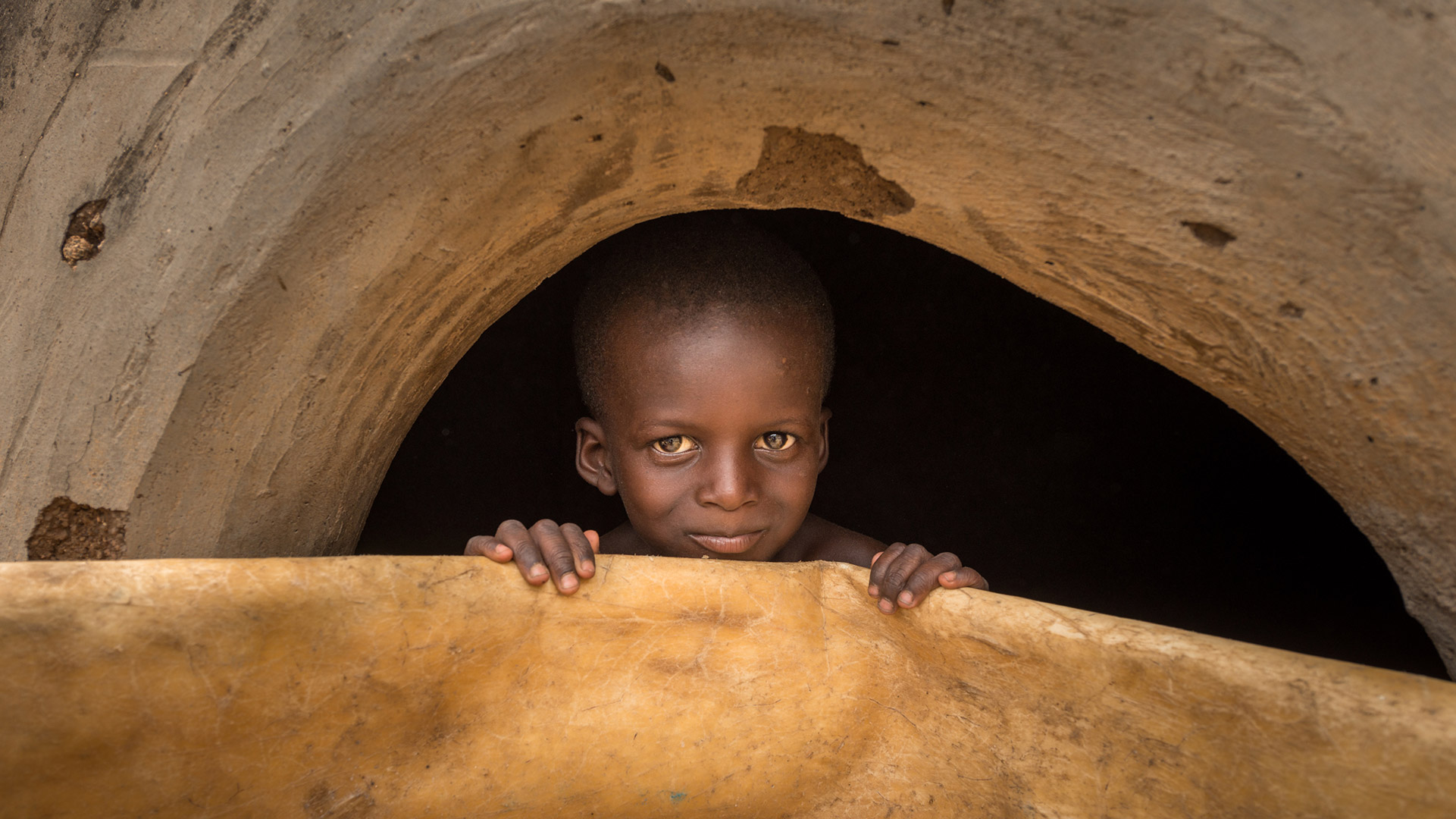
A Talensi boy peers out from inside a coop where chickens are held before they are sacrificed. Photo by Luke In.
Offerings of Blood: The Meaning of Animal Sacrifice
People from many different ethnic groups come to Tengzug from all over Ghana, and some from abroad, to consult with the god within the shrine. They bring chickens, goats, sheep, donkeys, cows, and even dogs to sacrifice—offerings to curry favor in their search for fertility, stability, prosperity, and security in life. Others sacrifice to make amends for evil acts and to reverse the negative consequences of sin or curse.
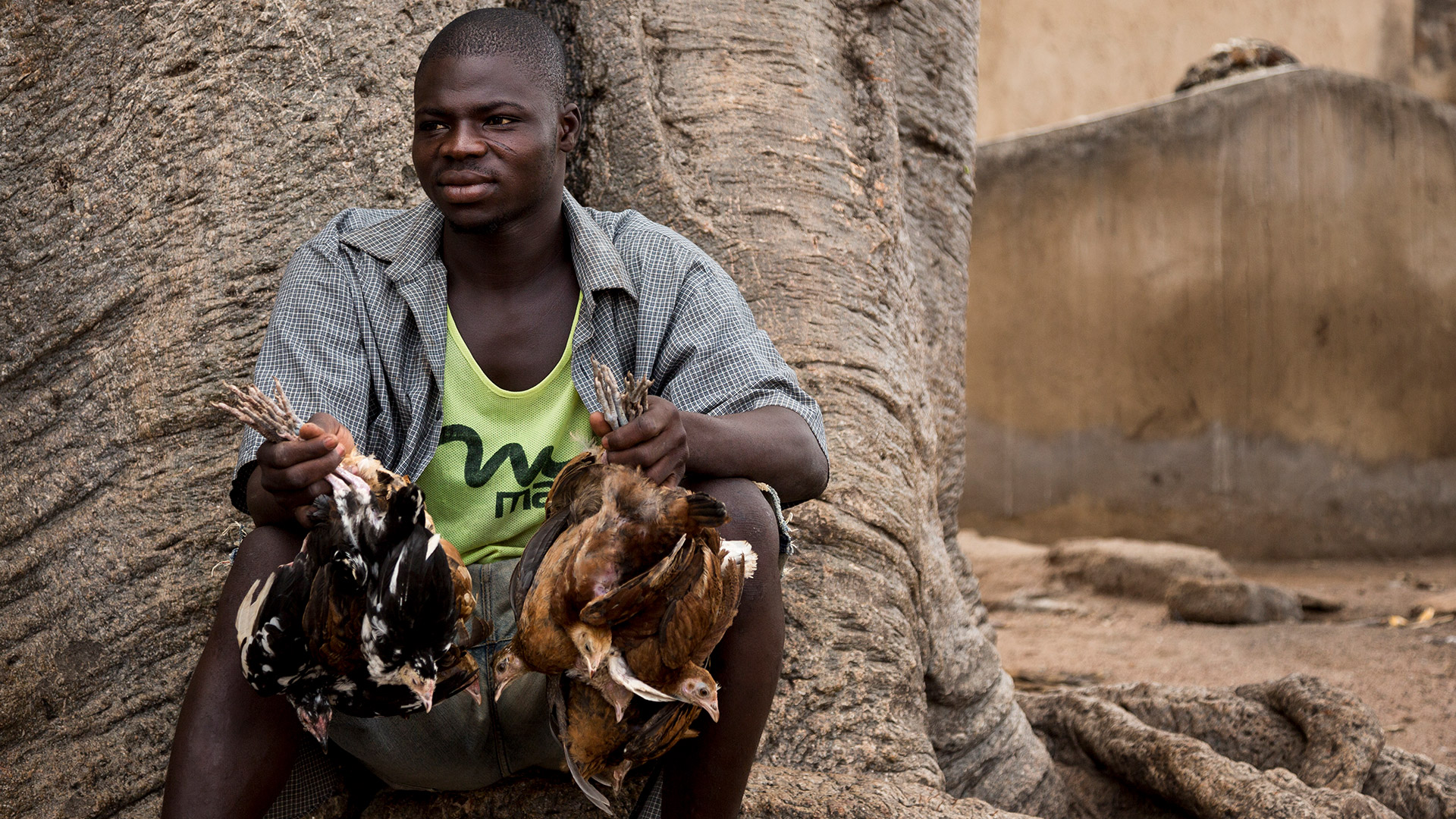
A Talensi man holds chickens brought by visitors as offerings to the local shrines. Photo by Elle Graham.
The spirits in the shrines are believed to feed off the life-blood of animals, so requests made for help and atonement must be accompanied by sacrifice.
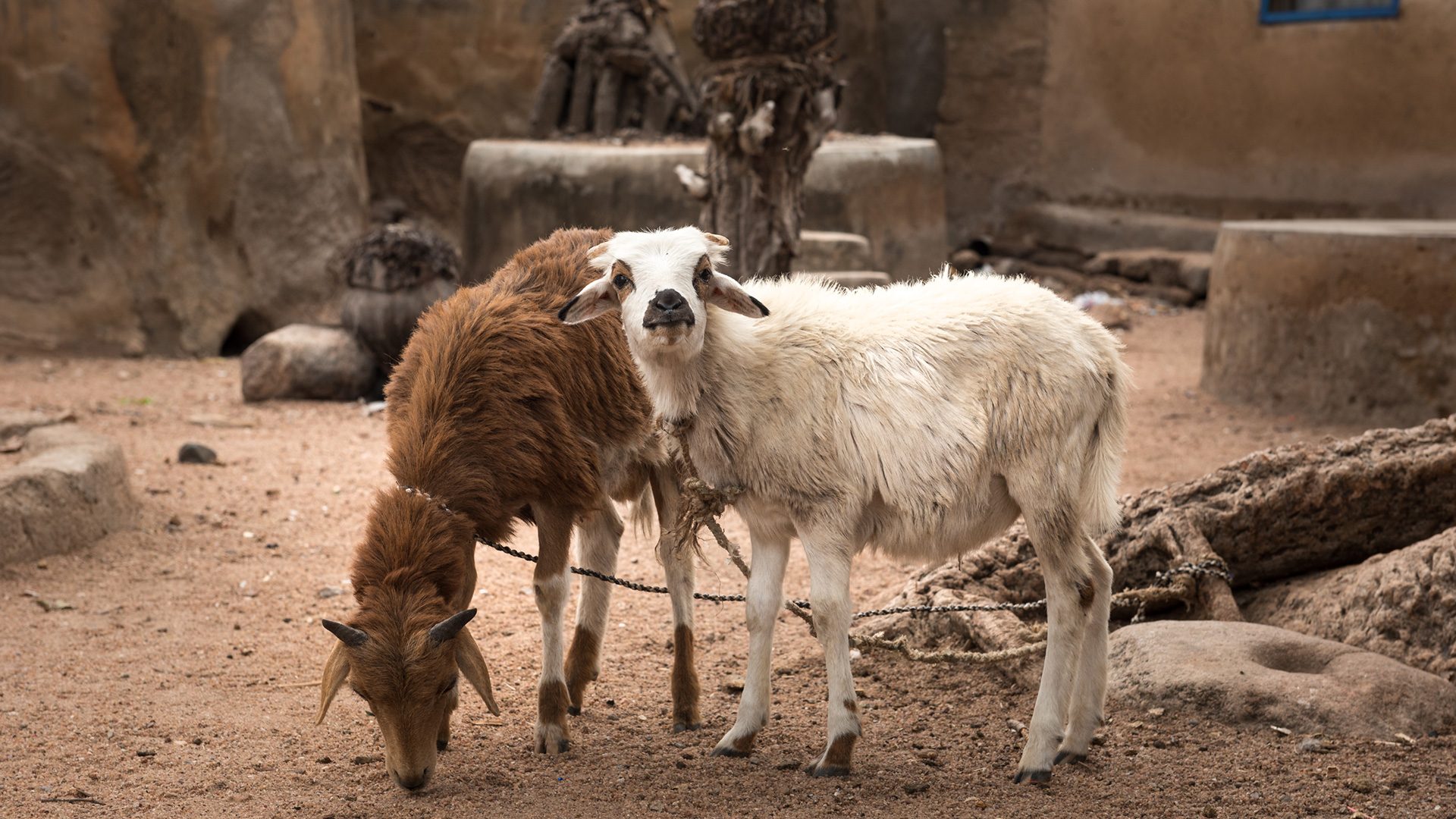
The sheer number of shrines and sacrifices made in the village is a shocking sight to first-time visitors. Photo by Luke In.
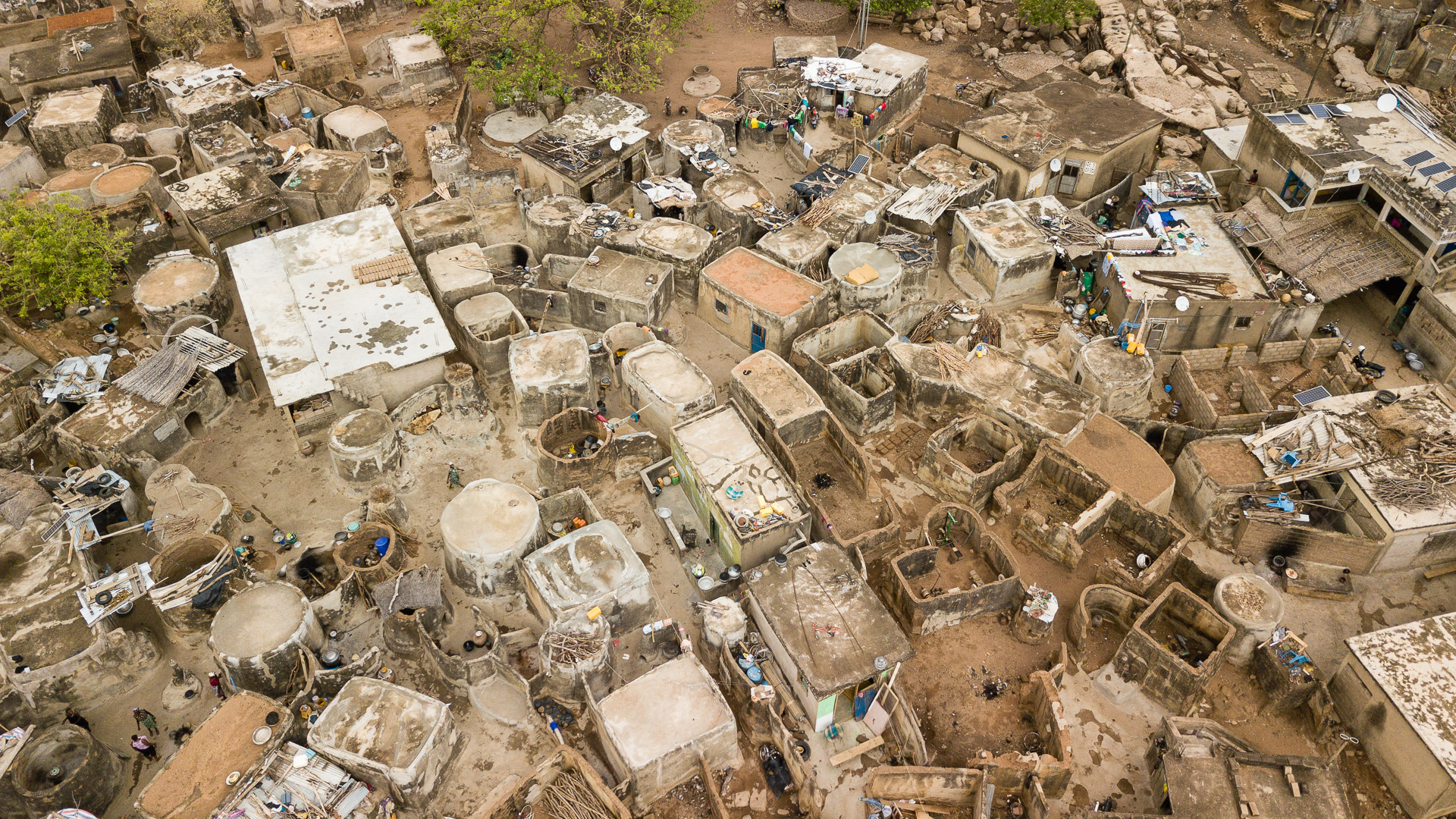
Shrines are found throughout the narrow alleys and outside every home. Photo by William Haun.
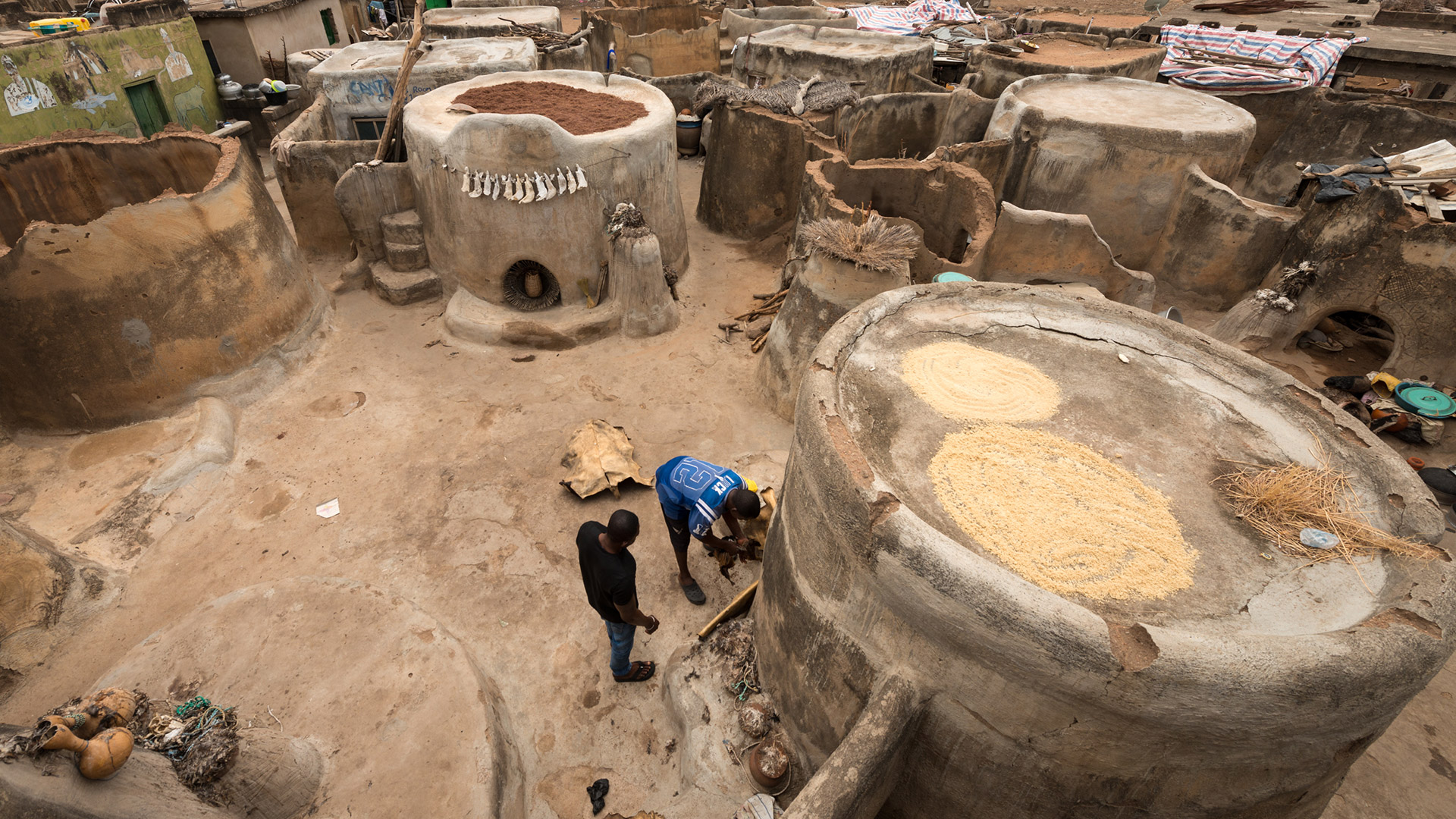
Two men gather chickens to be sacrificed to the local god, Tongnaab. Photo by Luke In.
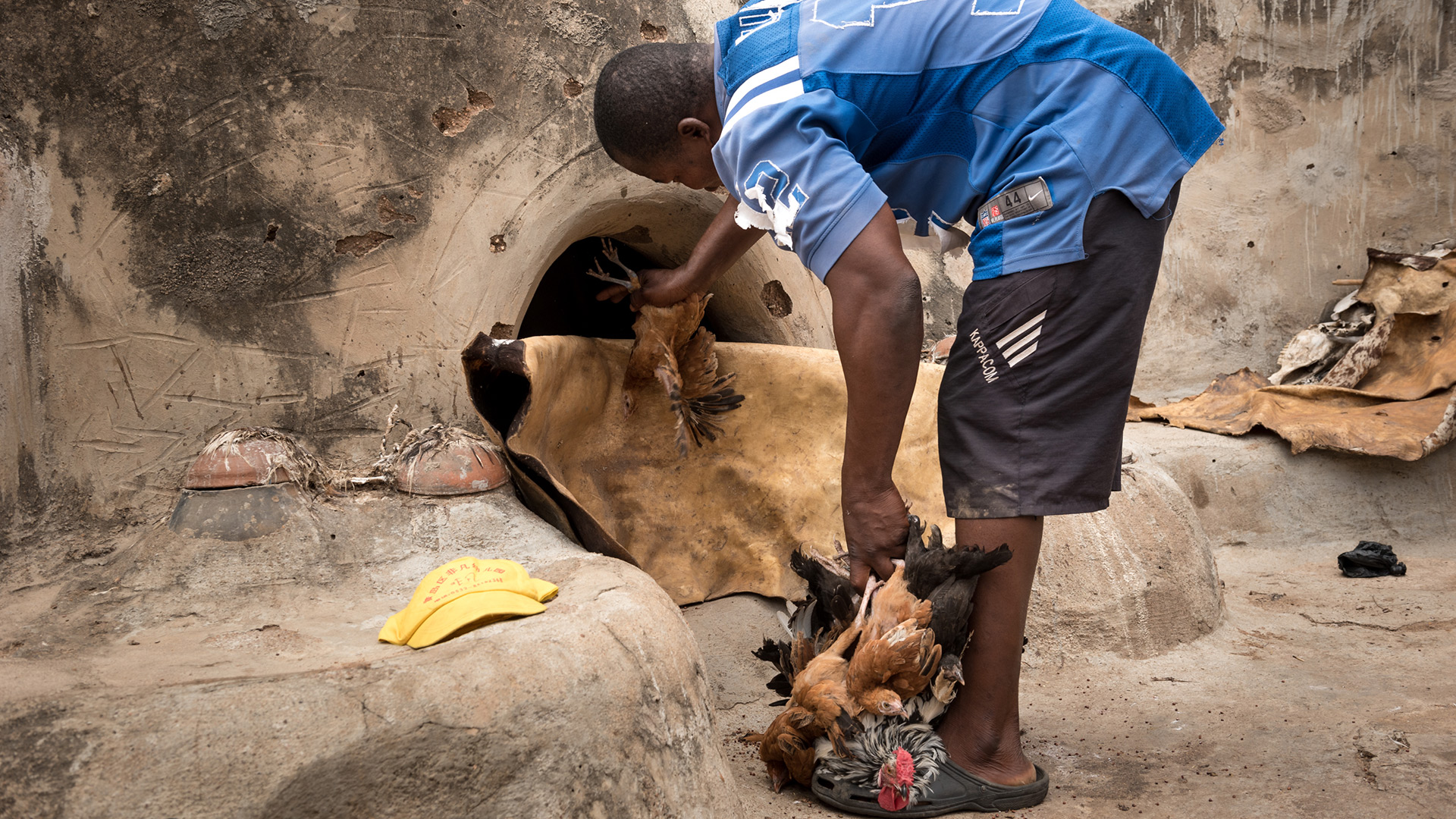
Birds are only one type of animal sacrifice. Goats, cows, donkeys, even dogs, are also offered. Photo by Luke In.
Shrines: A Place to Die
All throughout the winding maze of alleys in the community, I found shrines to local gods, spirits, and family ancestors. No two shrines were alike because they are built according to the demands of the spirit they serve. Some shrines are believed to communicate with ancestral spirits while others connect with spirits in nature. Although each shrine may look different, the gods in them are all hungry.
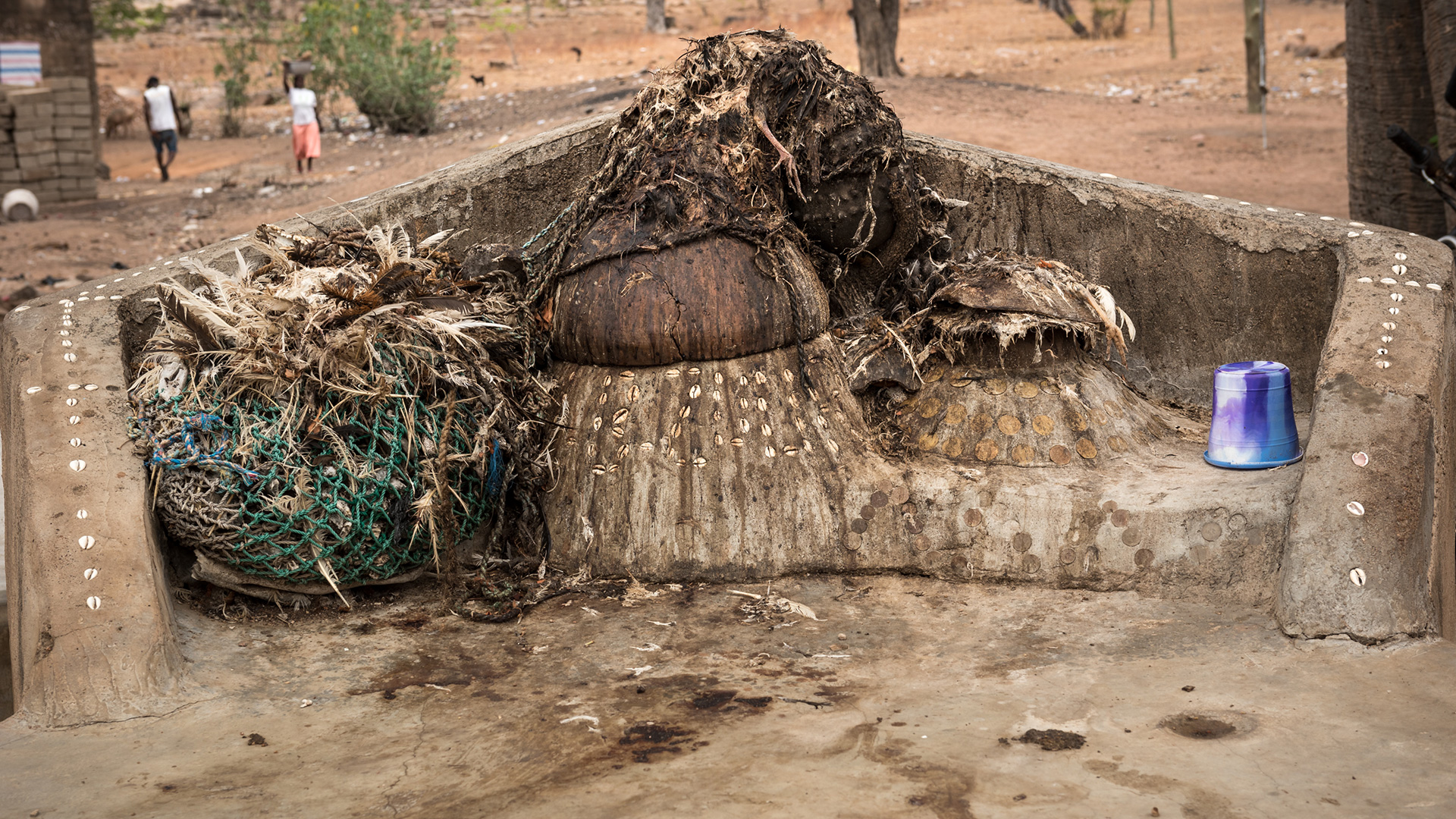
The remains of animal sacrifices are piled beside a shrine coated in blood. Photo by Luke In.
The shrines may look like something out of a horror film to Western eyes, but they are a normal part of everyday life to the Talensi.
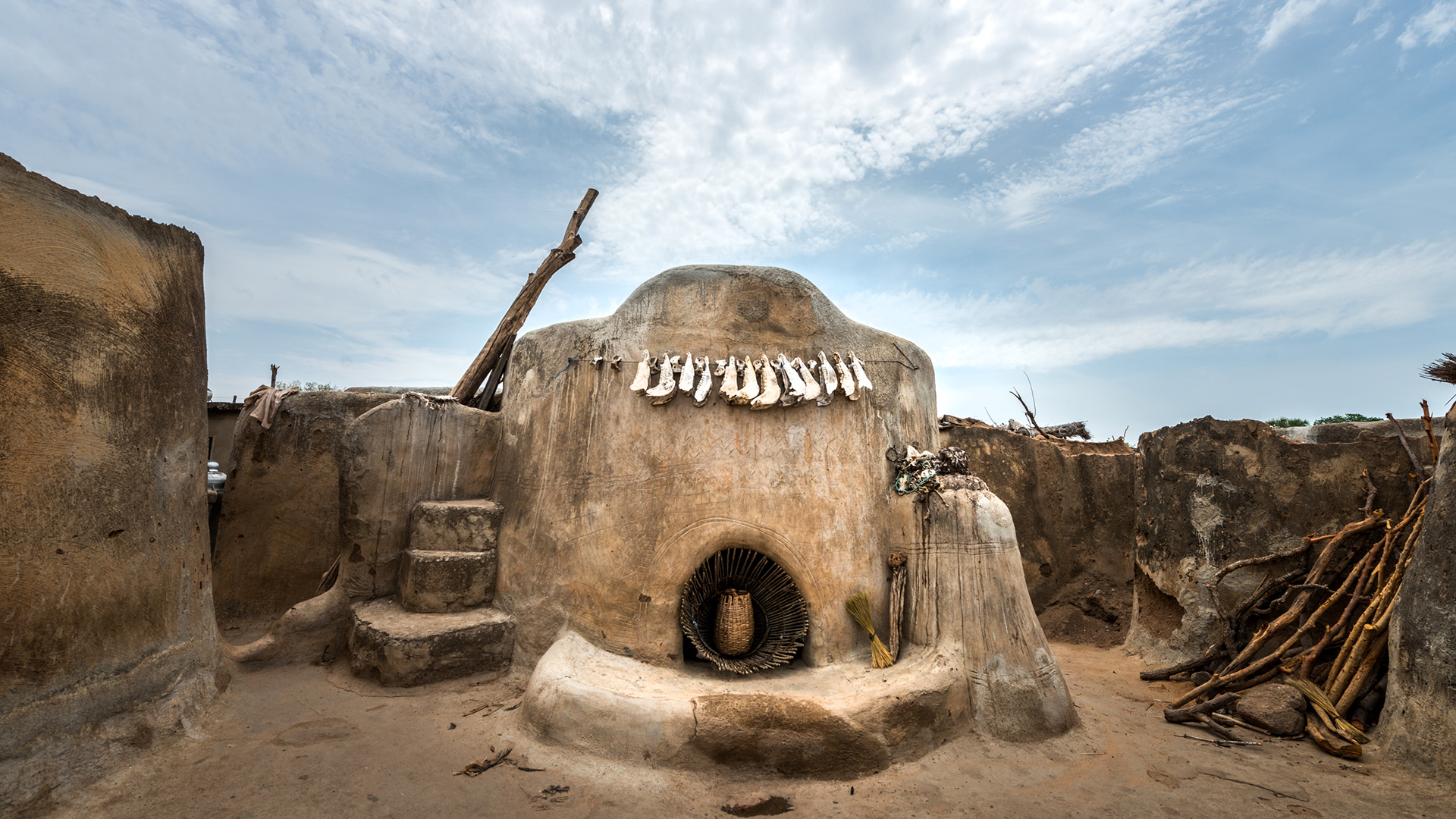
The jawbones strung across the front of a room represent the animals that have been offered to the owner’s shrine attached to the right. Photo by Luke In.
Jawbones and skulls of sacrificed animals are often displayed to show the number of sacrifices a person has performed or to demonstrate the power of a particular shrine. The most powerful shrines are even franchised so that the power of the god can be established in other places. The “children” of the god, called boarbii in the local language, are taken to other locations and represent their mother shrines.
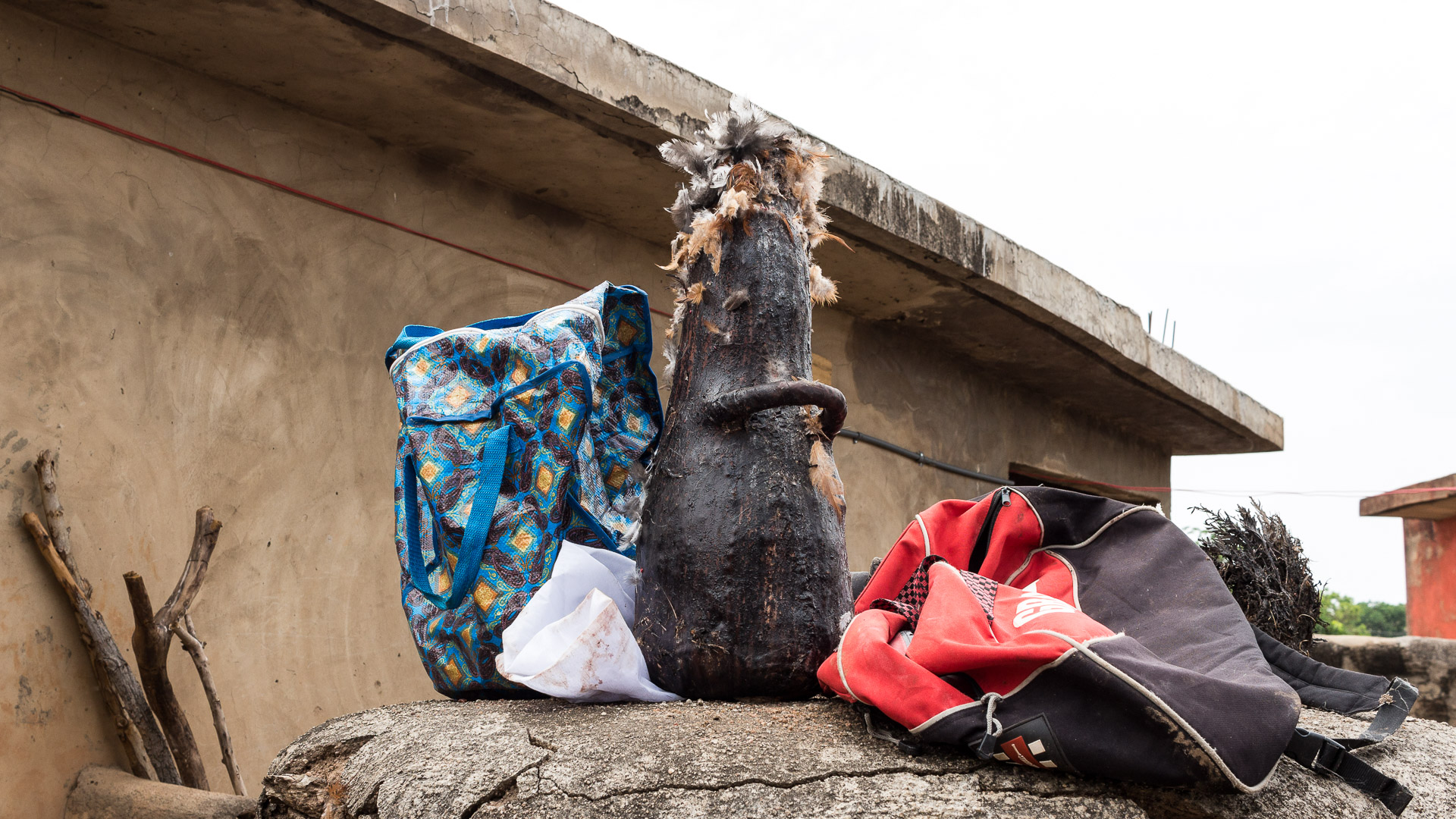
A boarbii, or shrine child, stained black with blood, awaits transportation to another location. Photo by William Haun.
Life in the Presence of Death
The scent of death is everywhere, and it’s oppressive. Is there is any hope for those who live here to be freed from their enslavement to a sacrificial system that cannot save them from ultimate death?
“Jesus offered himself as a perfect sacrifice without blemish to God, putting an end to the sacrificial system forever.”
Standing on the edge of the village, observing a tree breaking through two black rocks, I began to wonder if the gospel could take root here and break through this spiritual culture dependent on animal sacrifice.
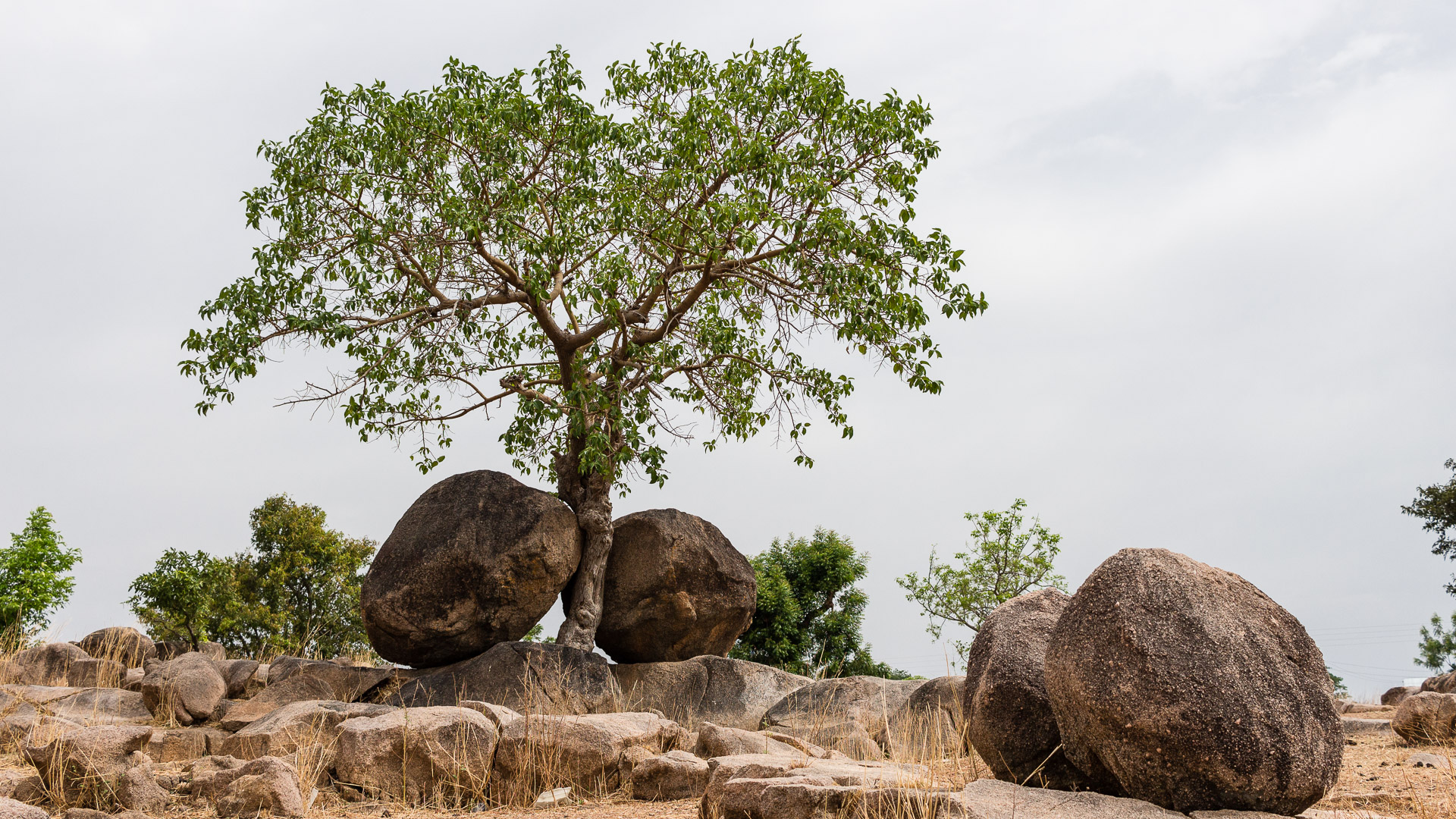
The unique and ominous landscape of the Tongo Hills has made it an important religious site for centuries. Photo by William Haun.
Earlier I spoke with a local tour guide and native of the community. While explaining the origins of Talensi religious practices, he said, “The shrine met us here.” But I wonder what it will take for the Talensi to meet Jesus.
The book of Hebrews explains that when Christ appeared as a “high priest of the good things that have come. . . . He entered the most holy place once for all, not by the blood of goats and calves, but by his own blood, having obtained eternal redemption” (Heb. 9:11–12 HCSB).
The blood of Christ is where power really lies. Jesus offered himself as a perfect sacrifice without blemish to God, putting an end to the sacrificial system forever. Only his sacrifice has the power to “cleanse our consciences from dead works to serve the living God” (Heb. 9:14 HCSB).
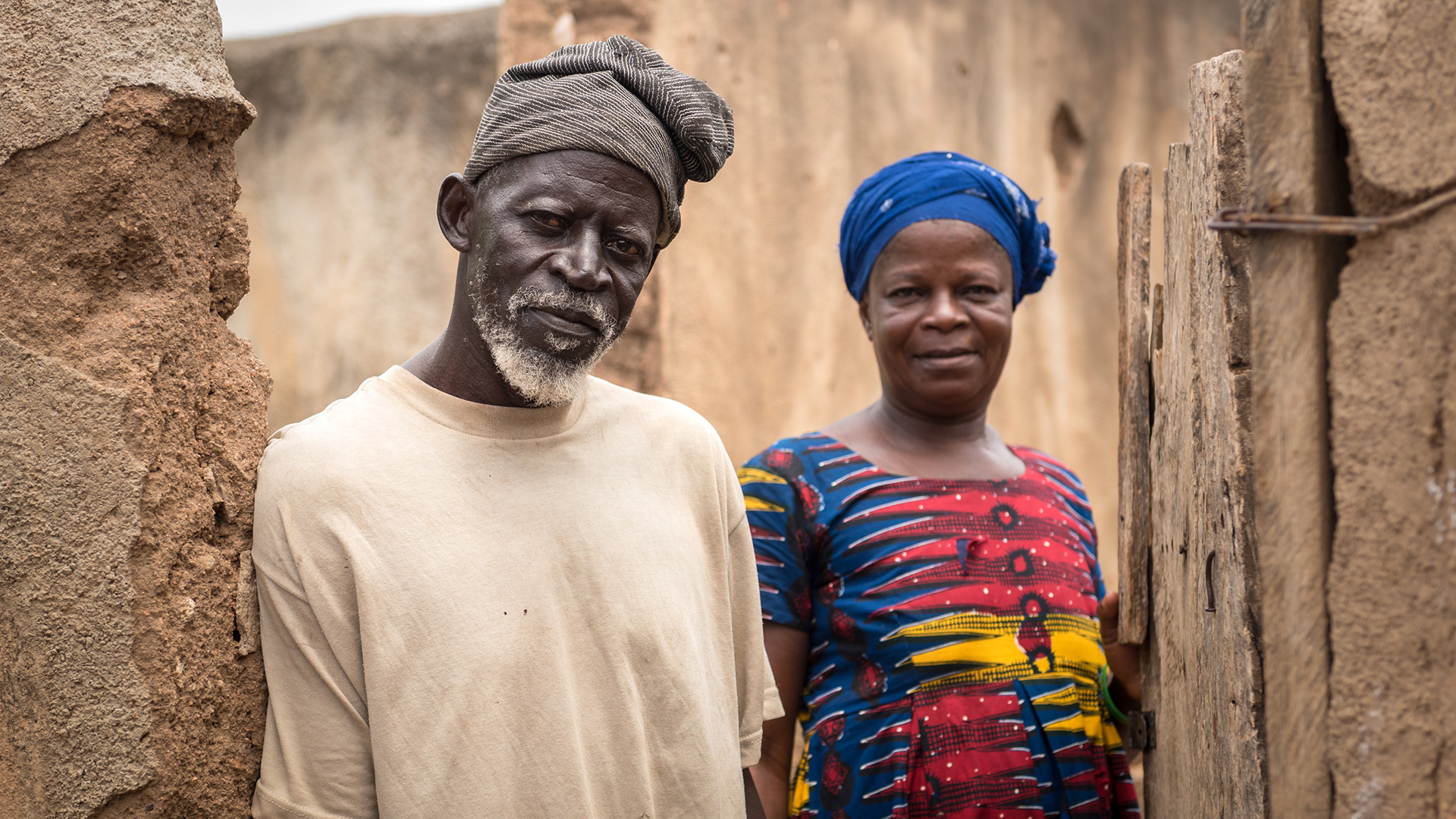
A Talensi man and his wife stand in the doorway of their home in the chief of Tengzug’s family compound. Photo by Luke In.
Pray
- Pray for the Talensi to be introduced to Christ, the Great High Priest, who laid down his own life so that they could find eternal life through him.
- Pray that when Christ appears a second time, “not to bear sin, but to bring salvation to those who are waiting for him,” many Talensi will be among those who meet their heavenly King with praise and worship (Heb. 9:28 HCSB).
William Haun lives in northern Ghana in the heart of the ancient Mamprusi kingdom with his wife and their two children. He’s known locally as the “Sulimiinsina’akyinnaaba” or “young white men’s chief.” He loves learning Mamprusi proverbs, history, and folk tales, and using those to communicate his faith effectively.
Luke In and Elle Graham are media specialists serving with the IMB.

